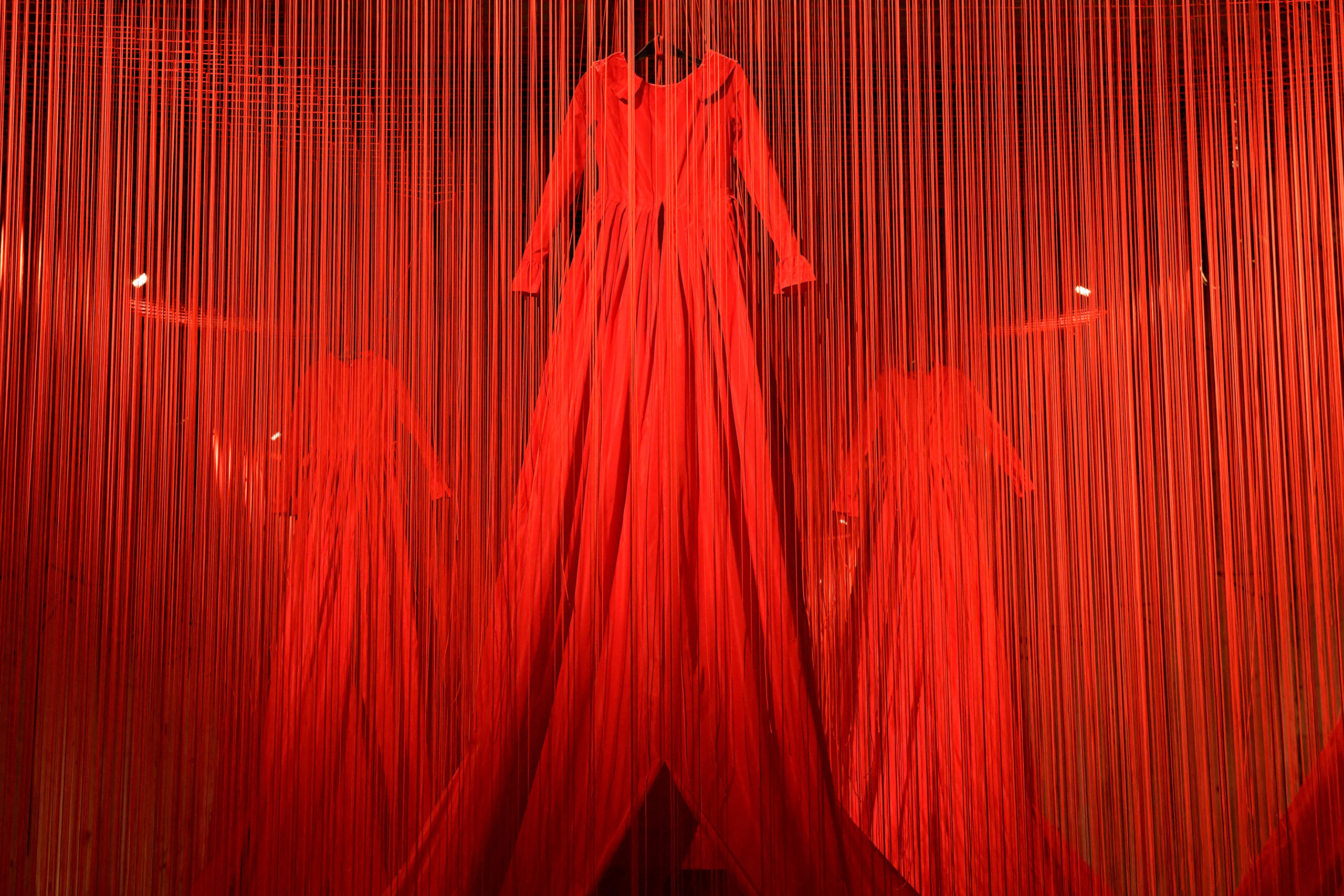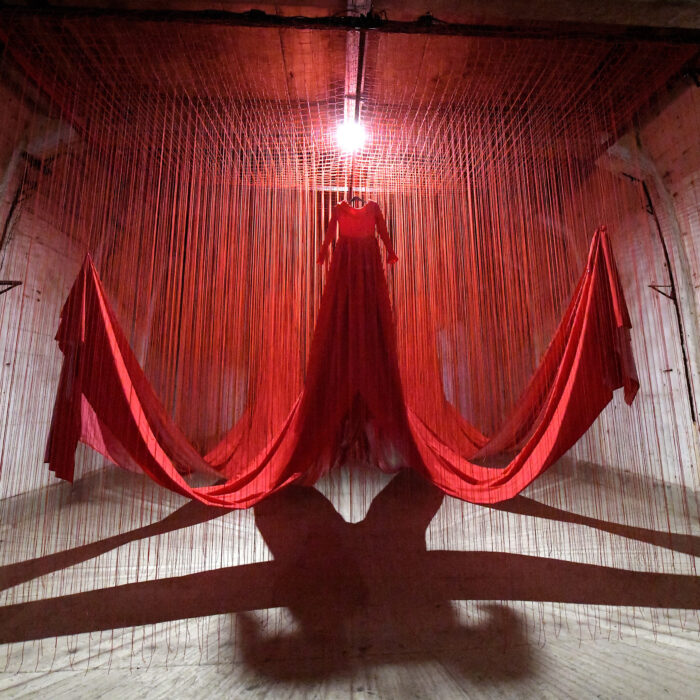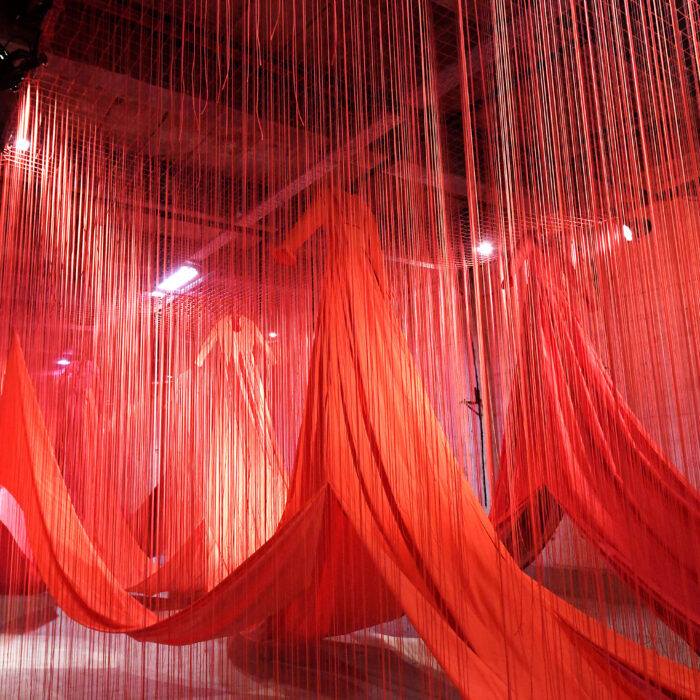There is an explanatory plaque at the entrance to the Ebensee concentration camp. It contains information about the prisoners of war who were sent here and the cruel suffering they had to endure until they died or the camp was liberated. However, if you don’t read the description at the entrance, it is just a large tunnel. The stone walls are damp and there are puddles of water on the floor. In a place so steeped in history, it is not easy to create a work of art worthy of the place.

By loading the video, you agree to YouTube’s privacy policy.
Learn more
“The tunnel of the former concentration camp at Ebensee is a surreal place. Even though it was created by human beings, it feels as though humans should not be in it. I wanted to fill this sad place with empty bodies.
The dresses create the shape of a body and fill the space with presence. I have been working with the concept of the presence of absence for a long time. I think the associations that the emptiness creates in the visitors are very interesting. For me, our clothing is like our second skin. Our third skin is the buildings in which we withdraw ourselves from the world. Within these safe spaces we show who we really are. But we have also not chosen these characteristics, either. Family, religion, culture, all of these are borders that we move around inside of. All of the information in our blood stands in relationship to other humans and that is often beautiful, but it can also be a burden to us as well.
In my installation, the dresses are surrounded by red cables. The blood vessels are normally inside the body, but they are outside in my installation. They keep the dresses captive and protect them as well. I often ask myself about the servicing of ourselves and of society. Why is it so ambivalent that we need each other and yet have to protect ourselves from each other?”
CHIHARU SHIOTA




















